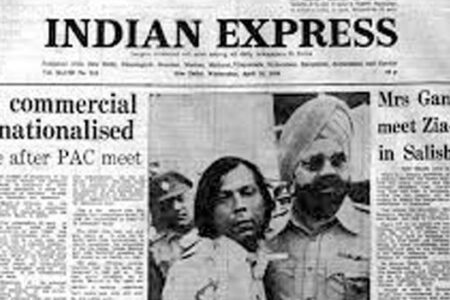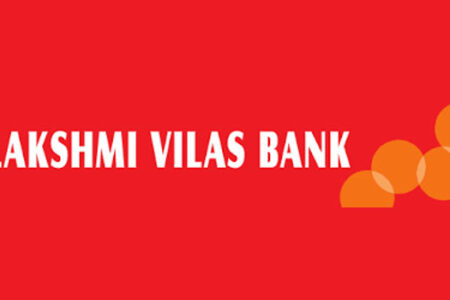In three months ending March 2021, the State Bank of India posted Rs6,451 crore net profit, its highest quarterly profit. For the full financial year, its Rs20,410 crore profit has also been a record high. India’s largest lender has proposed a dividend (Rs4 per share) after a gap of three years.
It had stopped paying dividends from the financial year 2018 when it had recorded its first ever annual loss (Rs6,547 crore). In 2019, it returned to the black by posting Rs862 crore profit and followed it up with a profit of Rs14,488 crore in 2020.
Investors have started wooing the State Bank stock with open arms. Between October 7, when Dinesh Khara took over as the new boss of the 215-year-old bank, and 4 June, the last trading day, the State Bank stock has risen 127.46 per cent. During this period, the Bank Nifty, NSE’s banking index, hasn’t gone up even half of this (53.68 per cent). Among large banks, the Bank of Baroda stock has risen 97.57 per cent, followed by ICICI Bank Ltd (67.85 per cent), Punjab National Bank (55.32 per cent) and HDFC Bank Ltd (29.19 per cent).
Why are the investors gung-ho about State Bank?
Its health is improving on most parameters. For instance, the gross non-performing assets (NPAs), which were Rs2.23 trillion in March 2018, have come down to Rs1.26 trillion in March 2021. As a percentage of loans, it has shrunk from 10.91 per cent to 4.98 per cent during this period. After setting aside money or making provision, the net NPAs are down from Rs1.2 trillion (5.73 per cent) to Rs36,810 crore (1.5 per cent).
The so-called provision coverage ratio, including written-off loans or off-balance sheet bad debt, which still can be recovered, has risen from 66.17 per cent to 87.75 per during this time.
Finally, the fresh slippage or new addition to bad loans, which was Rs94,781 crore (4.85 per cent) in 2018, has come down to Rs28,564 crore (1.18 per cent) even as recovery in written-off accounts has almost doubled during the past four years — from Rs5,333 crore to Rs10,297 crore.
The only Indian bank in the list of 50 largest banks in the world by assets (43rd in 2020), State Bank is a proxy for Indian economy. With Rs45.3 trillion assets (including its overseas book), it represents close to 23 per cent of India’s GDP. If we look at its domestic balance sheet, with over Rs35 trillion deposits, it has 23.3 per cent share of the banking industry’s liabilities. Its market share in advances is 19.77 per cent (Rs21.6 trillion). While it has been able to maintain its market share in deposits, its share in advances has been slipping, marginally though.
Riding on 46.18 per cent low-cost current and savings accounts, or CASA, of total deposit liabilities, the 4.2 per cent cost of deposits for State Bank is comparable with other large banks.
Till now the story is fine. But there are issues. More than growth in the loan book (its credit deposit ratio is 61 per cent now), a bigger challenge is bringing down the cost-to-income ratio, a key parameter of a bank’s efficiency.
Currently, State Bank’s cost-to-income ratio is 53.6 per cent. How does it compare with other large Indian banks? For HDFC Bank, it is 36.32 per cent and for ICICI Bank, 37.2 per cent. Large public sector banks such as Bank of Baroda and Punjab National Bank, too, have less than 50 per cent cost-to-income ratio.
Former State Bank chief Arundhati Bhattacharya had ramped up the scale by merging its five associate banks as well as the Bharatiya Mahila Bank with itself. Khara’s immediate predecessor Rajnish Kumar’s obsession was cleaning up the balance sheet and making the bank technology-savvy. Khara’s task is cut out. He just needs to make the bank more efficient. Period.
State Bank has 470 million customers and 80 per cent of its new customers are in the 20-40 age group. Roughly one out of every three Indians banks with State Bank. It has the largest mutual fund under its belt; boasts of the second largest credit card portfolio; and its life insurance arm is among the largest in the private sector. Has it been using the enormous data base for cross-selling financial products? It doesn’t seem so if its fee income is any indication.
The bank has already put in place the technology platform. When it comes to transactions, 93 per cent happen outside its 22,000-strong branch network. Around 67 per cent of all transactions are digital and one out of five of its customers (90 million) uses internet banking. Its end-to-end digitisation mobile banking and lifestyle app, YONO, has 37 million customers. Now, it’s time to leverage the eco system already created to grab the opportunities.
I am told using its database, the bank pre-approved Rs15,000 crore worth of personal loans last year. This is too small, considering the size of the State Bank. It must start the process of using the largest database at the disposal of any Indian financial intermediary in real earnest and convert itself into a market place – not for financial products alone but also for meeting the other needs of its customers.
Between 2018 and 2021, its retail loan book has risen from around Rs10 trillion to Rs13.1 trillion, while the growth in the corporate loan book is slow – from Rs7.4 trillion to close to Rs8.2 trillion. Overall, retail loans make up 60 per cent of its loan book now. This is why it’s important for State Bank to turn itself into a marketplace, meeting all financial needs of its customers in the entire value chain. Incidentally, its retail home loan book is Rs5 trillion, the largest in India.
Another Rs5 trillion is the size of its loan book for agriculture and small and medium enterprises – little less than one-fourth of its entire domestic loan book. As a lender, it can play a key role in the health care segment as well as the government’s production-linked incentive scheme (instituted in April 2020), which is acting like a booster dose for multiple segments in the manufacturing sector. It has technology and low-cost funds, two key ingredients to rush there.
Thanks to technology, the elephant in Indian banking has already become nimble-footed. Khara needs to choreograph the steps for its dance.
A senior banker has told me that the systems and processes at State Bank are so rigid and its size so big that any banker, great or average, can just make 10 per cent difference on either side – making it better or worse. No more, no less. In statistics, this is called standard deviation. Can Khara, the low-profile Delhi School of Economics alumnus, break the norm and make a larger difference?



